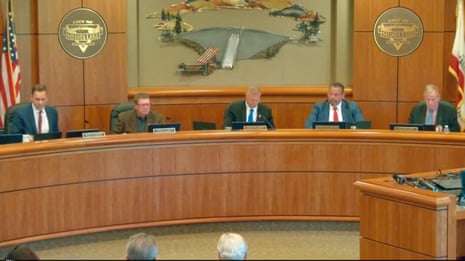Executive Summary
- MIT researchers have demonstrated a tenfold increase in quantum computing speed using a new superconducting circuit with a 'quarton coupler' that enables faster qubit readout and operations.
- The 'quarton coupler' facilitates record nonlinear light-matter coupling, enhancing the interaction between photons and qubits, which is crucial for efficient quantum information processing.
- This advancement brings fault-tolerant quantum computing closer to reality by enabling faster error correction and more efficient quantum operations within the limited coherence time of qubits.
Event Overview
Researchers at MIT have achieved a significant advancement in quantum computing by demonstrating what they believe is the strongest nonlinear light-matter coupling ever achieved in a quantum system. This breakthrough, detailed in a paper published in Nature Communications, involves a novel superconducting circuit architecture featuring a 'quarton coupler.' The new technology enables interactions between light and matter that are approximately ten times stronger than previous demonstrations. This improvement has the potential to dramatically speed up quantum operations, bringing fault-tolerant, real-world quantum computers closer to practical application by addressing critical limitations in qubit coherence and readout speed.
Media Coverage Comparison
| Source | Key Angle / Focus | Unique Details Mentioned | Tone |
|---|---|---|---|
| MIT News | Highlighting the potential of the new coupler to eliminate bottlenecks in quantum computing by enabling faster error correction and measurement. | Mentions specific MIT researchers involved, including Yufeng “Bright” Ye and Kevin O’Brien. Also names the funding sources: the Army Research Office, the AWS Center for Quantum Computing, and the MIT Center for Quantum Engineering. | Enthusiastic and optimistic, emphasizing the impact on real-world applications. |
| Innovation (article via multiple outlets) | Emphasizing the ten-fold increase in quantum computing speed and the role of the 'quarton coupler' in enhancing light-matter interactions. | Highlights the quarton coupler's origin in a photon detector project and its versatility in producing strong nonlinear interactions. | Excited and forward-looking, focusing on the potential for transforming AI and solving complex problems. |
| Nature Communications | Technical details on the experiment, including the materials and methods used to demonstrate near-ultrastrong nonlinear light-matter coupling. | Provides specific measurements and calculations, such as the normalized nonlinear coupling of (4.852 ± 0.006) × 10−2 and the matter-matter nonlinear coupling of χ/2π = 580.3 ± 0.4 MHz. It also goes into detail about the circuit's potential energy and the gradiometric quarton coupler. | Scientific and technical, presenting empirical data and theoretical analyses. |
Key Details & Data Points
- What: MIT researchers have developed a new superconducting circuit architecture, featuring a 'quarton coupler', that achieves enhanced nonlinear light-matter coupling.
- Who: Key individuals involved are Yufeng “Bright” Ye (lead author, MIT PhD graduate), Kevin O’Brien (senior author and associate professor at MIT), and other researchers from the Research Laboratory of Electronics (RLE) at MIT and MIT Lincoln Laboratory.
- When: The research was published in Nature Communications on April 30, 2025 (based on the Nature Communications article).
- Where: The research was conducted at the Massachusetts Institute of Technology (MIT), including the Research Laboratory of Electronics (RLE) and MIT Lincoln Laboratory.
Key Statistics:
- Key statistic 1: 10x (Potential increase in quantum computing speed due to stronger nonlinear light-matter coupling)
- Key statistic 2: (4.852 ± 0.006) × 10−2 (Normalized nonlinear coupling achieved in the experiment)
- Key statistic 3: 580.3 ± 0.4 MHz (Matter-matter nonlinear coupling achieved, representing the largest reported ZZ interaction)
Analysis & Context
The development of the 'quarton coupler' and the demonstration of near-ultrastrong nonlinear light-matter coupling represent a significant advancement in the field of quantum computing. This breakthrough addresses a critical bottleneck in quantum processing speed by enabling faster qubit readout and more efficient quantum operations. The increased coupling strength allows for more rounds of error correction within the limited coherence time of qubits, which is essential for building fault-tolerant quantum computers. The theoretical framework and experimental results detailed in Nature Communications provide a solid foundation for future research and development in this area.
Notable Quotes
This would really eliminate one of the bottlenecks in quantum computing. Usually, you have to measure the results of your computations in between rounds of error correction. This could accelerate how quickly we can reach the fault-tolerant quantum computing stage and be able to get real-world applications and value out of our quantum computers.
Most of the useful interactions in quantum computing come from nonlinear coupling of light and matter. If you can get a more versatile range of different types of coupling, and increase the coupling strength, then you can essentially increase the processing speed of the quantum computer.
This work is not the end of the story. This is the fundamental physics demonstration, but there is work going on in the group now to realize really fast readout.
Conclusion
MIT's innovative quarton coupler represents a significant leap in quantum computing, achieving a tenfold increase in quantum operation speeds by creating an unprecedentedly strong nonlinear light-matter coupling between qubits and resonators. This advancement addresses a critical bottleneck in building fault-tolerant quantum computers by enabling lightning-fast qubit readout and processing in mere nanoseconds, which is essential for rapid error correction and maintaining computation fidelity. The quarton coupler, a specialized superconducting circuit, not only enhances light-matter interactions but also boosts matter-matter coupling between qubits, paving the way for more complex quantum processors and faster, more robust quantum gates. While integration into practical systems requires further development, including the addition of electronic components like filters to create complete readout circuits, this fundamental physics demonstration opens promising avenues for ultrafast photon detection and qubit gates, potentially revolutionizing quantum information processing and accelerating the realization of real-world quantum applications in fields like materials science and machine learning.
Disclaimer: This article was generated by an AI system that synthesizes information from multiple news sources. While efforts are made to ensure accuracy and objectivity, reporting nuances, potential biases, or errors from original sources may be reflected. The information presented here is for informational purposes and should be verified with primary sources, especially for critical decisions.









